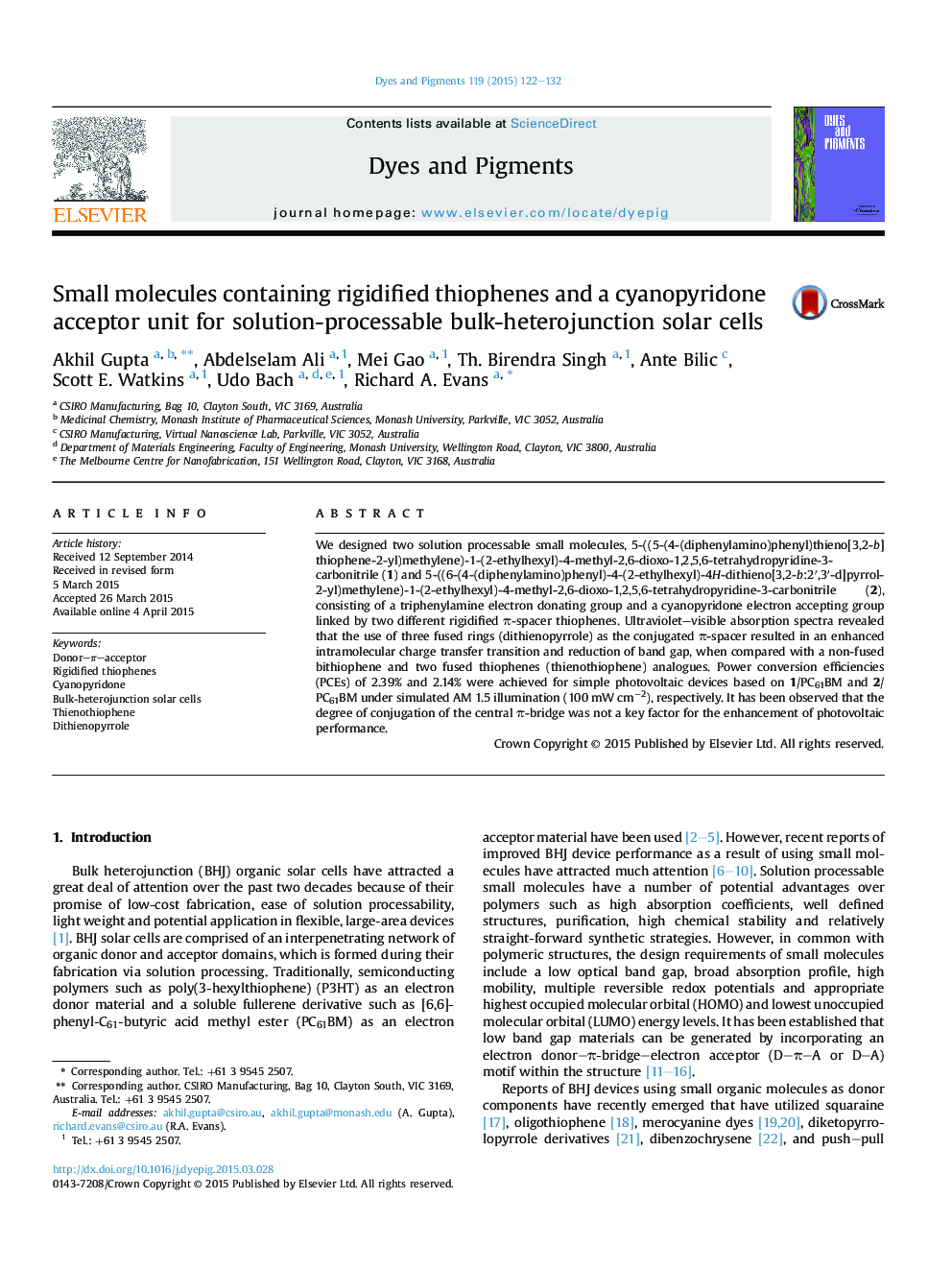| Article ID | Journal | Published Year | Pages | File Type |
|---|---|---|---|---|
| 175850 | Dyes and Pigments | 2015 | 11 Pages |
•Use of rigidified thiophenes in conjunction with aromatizable cyanopyridone acceptor.•Linkage of rigidified thiophenes to aromatizable acceptor for spectral red-shift.•Two fused thiophenes display better film morphology comparing to three fused heterocycles incorporating thiophenes.
We designed two solution processable small molecules, 5-((5-(4-(diphenylamino)phenyl)thieno[3,2-b]thiophene-2-yl)methylene)-1-(2-ethylhexyl)-4-methyl-2,6-dioxo-1,2,5,6-tetrahydropyridine-3-carbonitrile (1) and 5-((6-(4-(diphenylamino)phenyl)-4-(2-ethylhexyl)-4H-dithieno[3,2-b:2′,3′-d]pyrrol-2-yl)methylene)-1-(2-ethylhexyl)-4-methyl-2,6-dioxo-1,2,5,6-tetrahydropyridine-3-carbonitrile (2), consisting of a triphenylamine electron donating group and a cyanopyridone electron accepting group linked by two different rigidified π-spacer thiophenes. Ultraviolet–visible absorption spectra revealed that the use of three fused rings (dithienopyrrole) as the conjugated π-spacer resulted in an enhanced intramolecular charge transfer transition and reduction of band gap, when compared with a non-fused bithiophene and two fused thiophenes (thienothiophene) analogues. Power conversion efficiencies (PCEs) of 2.39% and 2.14% were achieved for simple photovoltaic devices based on 1/PC61BM and 2/PC61BM under simulated AM 1.5 illumination (100 mW cm−2), respectively. It has been observed that the degree of conjugation of the central π-bridge was not a key factor for the enhancement of photovoltaic performance.
Graphical abstractFigure optionsDownload full-size imageDownload as PowerPoint slide
